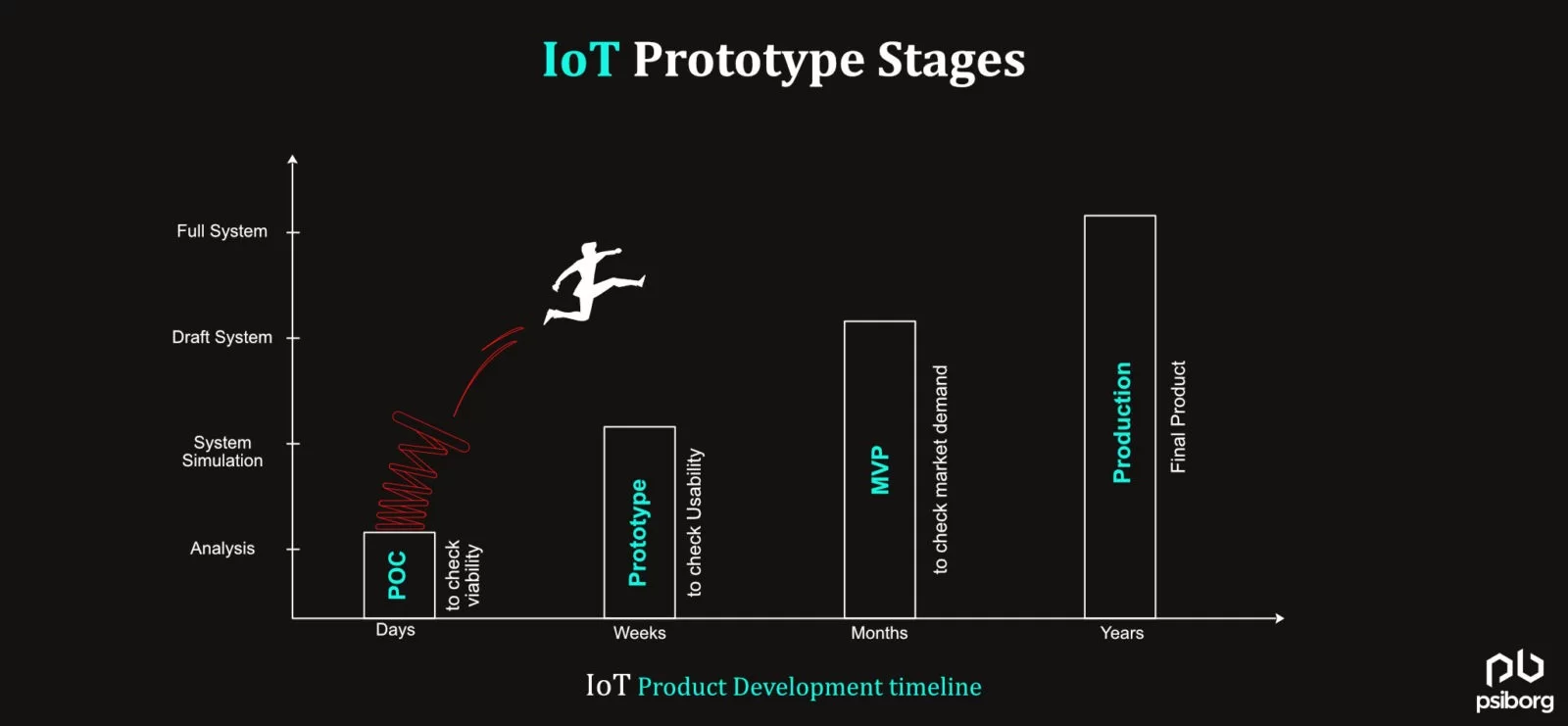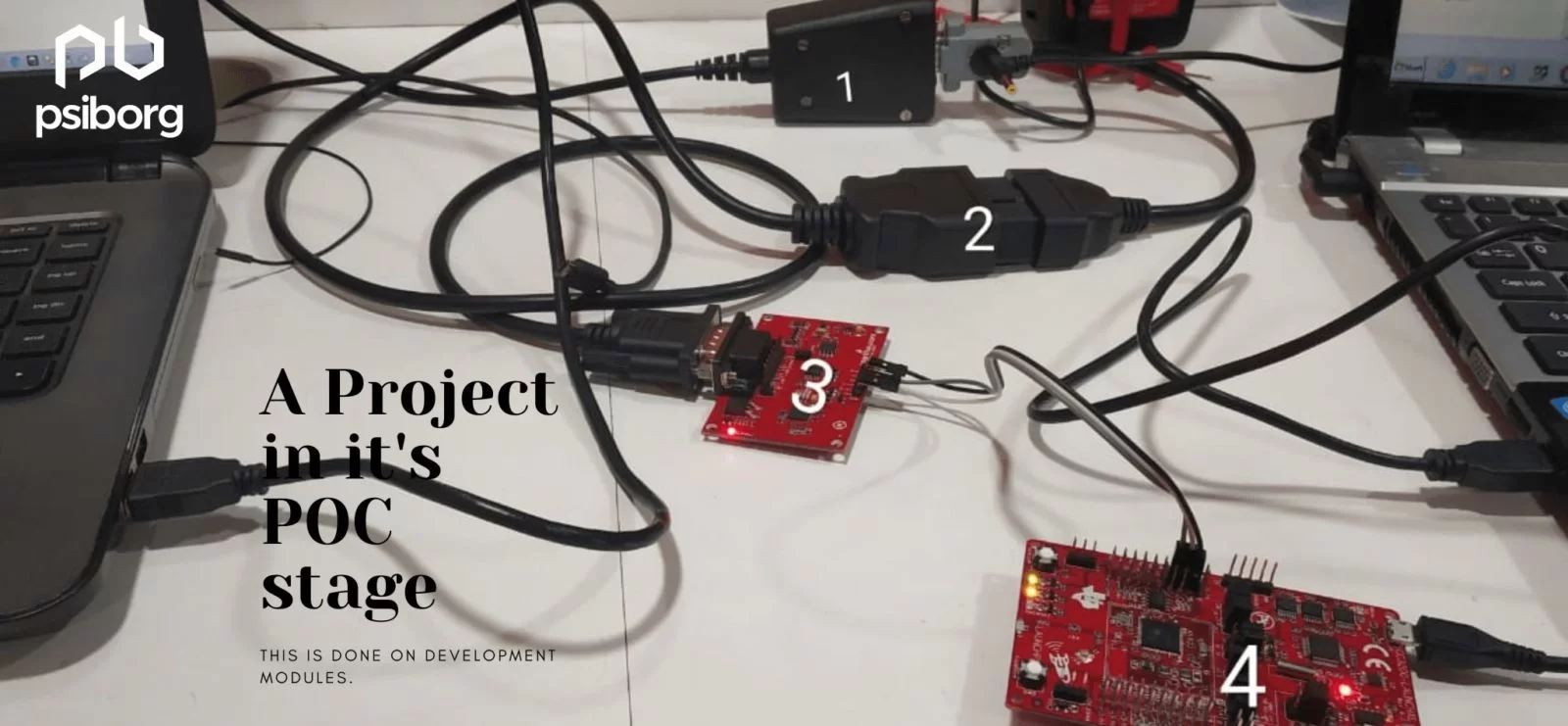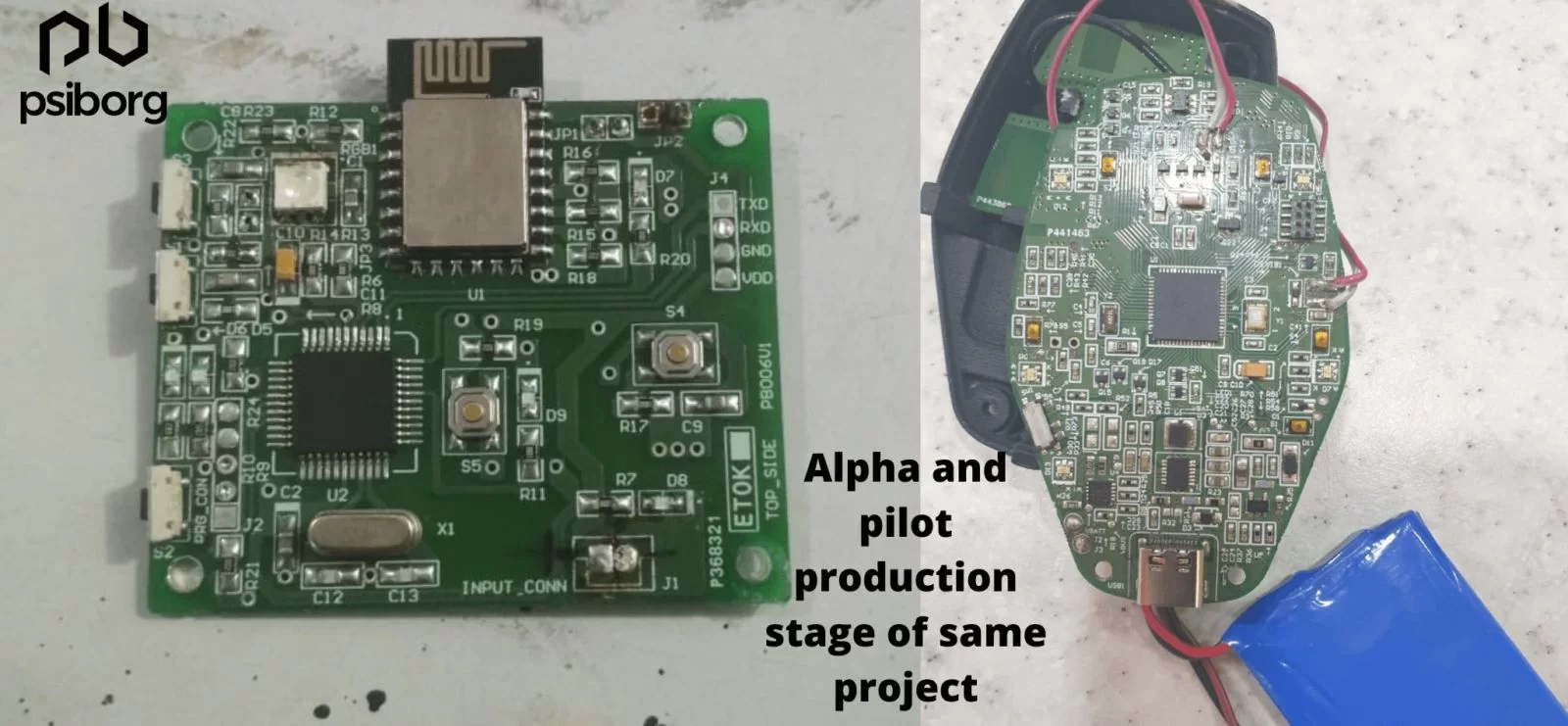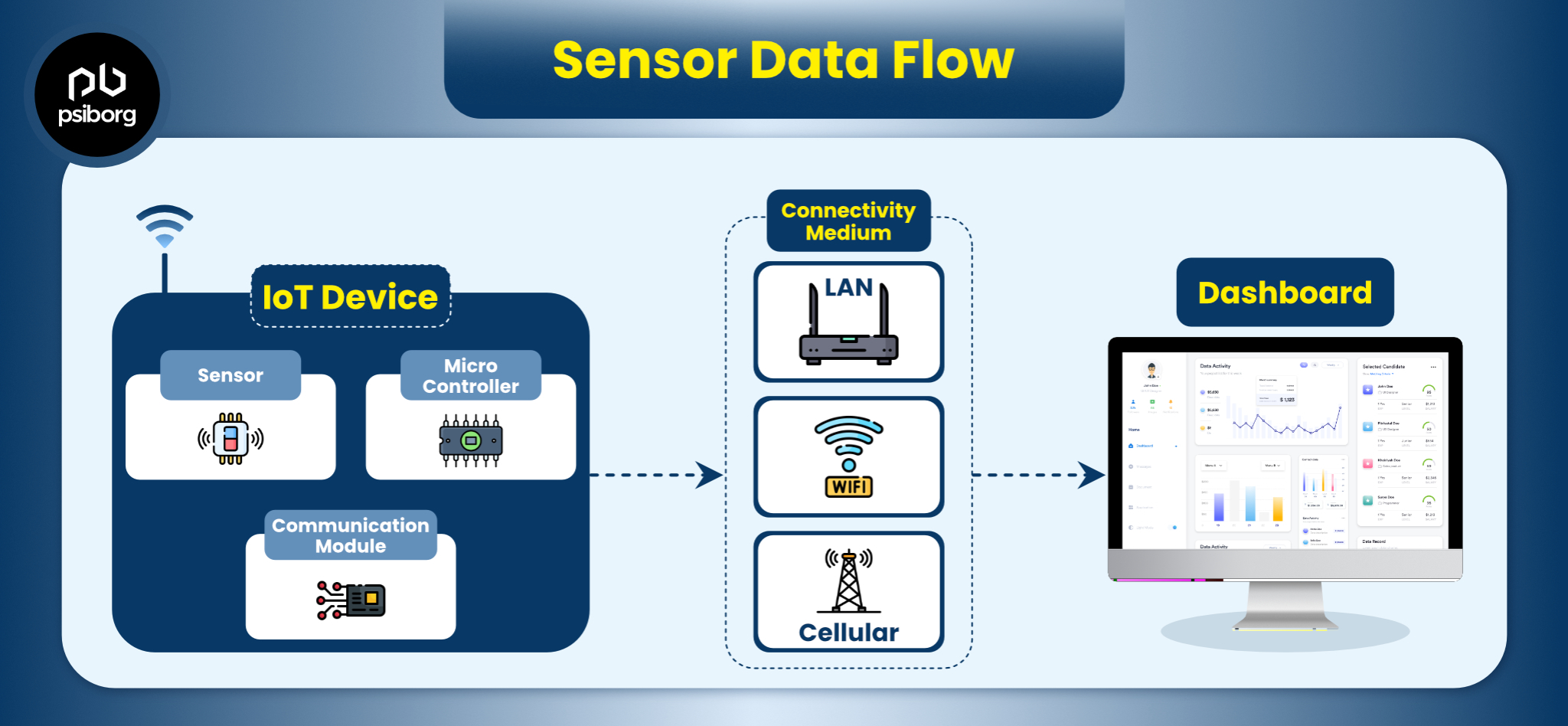The motive for building an IoT prototype is to test the IoT concept and to check the requirements and challenges that one can face at the final stage, which is IoT product development. Basically, it’s a crucial step that ensures the successful journey of a prototype to the final product.
But why do you need to know about IoT prototyping?
Well, because IoT is no longer a buzzword, it’s a big, successful business today.
In the near future, IoT will infiltrate every aspect of our lives by connecting our homes and offices. That’s why we say this is the right time to get involved.
If you run a business and want to include IoT in your business, or if you have an idea or product in mind, then you first need a prototype to examine how successful your idea is.
PsiBorg does rapid IoT prototyping for businesses from all industries. So here, we are sharing all the ifs and buts, hows, and whys of prototyping embedded devices in IoT.
Let’s discuss the journey of the IoT prototype to the final product.
WHY IS IOT PROTOTYPING NEEDED?
Building a new market-ready product directly, especially in a new technical field like IoT can be risky. Sure, you may have done your research very well with some intelligent guesses, but one wrong guess can prove to be very expensive in IoT because of the long time and money required to recompile the electronics. This is why we always begin with IoT prototyping.
An IoT prototype is used to understand the pinch points and to figure out the necessary parameters for Full stack IoT Development. A prototype is in no way a ready-to-market product, it is just a trial version that is deployed end-to-end with sensors connected through the device, network, cloud, end-user interface, and enterprise integration. Hence, a prototype is a way to visualize your product the way you want it to work and is proof of what your final product is going to look and work like.
Prototyping and designing software for IoT applications is one of the important steps while building an IoT Product. PoC shows the viability of the IoT solution whereas Prototype proves the usability of the solution.
An IoT product Development involves many stages in the journey of developing a Full stack IoT product.
WHAT IS AN IOT SOLUTION / PRODUCT?
An IoT solution consists of various technologies which require different skillsets.
Devices and Sensors – The IoT sensor devices or Sensor Nodes are equipped with machinery that requires monitoring. This data consists of various parameters of the device to be monitored.
Connectivity Protocols – IoT devices use wireless connectivity Protocols which enable communication.
IoT platform and Cloud integration – It is a Cloud platform that stores and manages the data fetched from sensor Nodes.
IoT Dashboard or Mobile App – The data of the monitoring devices can be seen by the supervisors on their PCs or mobile phones, IoT dashboard is the dashboard where the data is represented in the form of graphs, also providing important insights on the monitored machinery.
THINGS TO KEEP IN MIND WHILE BUILDING AN IOT PROTOTYPE
If you’re ready with your idea and want to work on your IoT prototype, here are some things that you should keep in mind-
1. Get the toughest problem out of the way first. It’s very important to start with the riskiest assumption when prototyping your IoT product. This will force you to make major product decisions early in the stage rather than months into the development cycle when you would’ve spent your time and resources developing a product that doesn’t fulfill your requirement.
2. Second, decide on which technologies you’re going to use in developing the IoT Solution. This may include a lot of research and some hits and trials. You might even run into some dead ends but by the end, you’ll be sure which technologies and communication protocols are best suited for your IoT product.
3. Once that is out of the way, it’s time to start building and finding solutions for the hiccups encountered in the process.
WHAT IS THERE IN AN IOT PROTOTYPE?
An IoT prototype generally has four aspects:
- A User Interface
- A Hardware Device
- Backend Software
- Connectivity
Let’s understand these four aspects in detail.
1. USER INTERFACE
User interface consists of designing an app or web front-end to be visible to users. In an IoT ecosystem, people generally overlook the user interface part and give preference to the hardware device and connectivity.
However, this is equally important because the user interface is the first thing people see when they look at your product. After all, the first impression is the last impression.
The main purpose of a user interface in an IoT project is to prove its value to the user. However, for an IoT product, an app is needed to let users interact with the system.
Since you are building a prototype, the purpose becomes slightly different. During the prototype, the user interface’s primary purpose is to validate the business.
2. HARDWARE DEVICE
Hardware devices are a crucial part of an IoT prototype and the most important part of the puzzle.
Because in an IoT product, you need a hardware device to reach out into the physical world. A hardware device includes sensors that can either measure something in the physical environment or actuate its effects in the same environment.
Also Read: Embedded Hardware Designing
3. THE BACKEND
The backend is the part that contains the system intelligence. Even though it is not visible to the user, we cannot overlook it. Because in real life, all the magic happens in the backend.
The backend collects the data in its database and also makes decisions about actions. The calculation of the data is then displayed on the user interface. Without the backend, the system is unable to do its job.
4. THE CONNECTIVITY
As the name implies, connectivity means connecting the hardware with the backend and then the backend with the user interface.
We can divide connectivity into two parts: user-backend connectivity and device-backend connectivity.
User backend connectivity is done using internet protocols, and for device backend connectivity, there are several options, like connectivity through 6LoWPAN, LPWAN, Bluetooth, and ZigBee.
STAGES OF IOT PROTOTYPING

Full Stack IoT Product Development consists of various stages and is a long journey till Product Development.
The first step is PoC in which the development team finds out the viability of the solution required and what challenges could possibly come on the way to product development. This is usually done within a few days of the start of the project. This provides a rapid analysis of the required IoT solution.
After PoC, a prototype is created with hardware and software elements. A prototype is something that can be handed over to the client for demonstration. It basically shows the system simulation and helps in finding out the usability of the product. It generally takes weeks of time.
When the usability of the product is checked, it is time to find out the market demand for the product. A basic version of the solution is launched, which helps in getting user feedback at the preliminary level. This takes at least a few months to get an IoT solution at this level.
Now it is the time to end the development journey and launch the final product.
Even IoT prototyping consists of different versions and is upgraded at levels. Let’s dig into it.
Also Read: PoC to MVP Development
APPEARANCE MODEL IN IOT PROTOTYPE
An appearance model is a physical mock-up, first, it is a series of drawings that explore the number of configurations for the product. Then a 3D structure is printed which helps in forecasting the look of the end product. The dimensions are not frozen at this stage but are kept in mind as a target size. The appearance model is used to demonstrate the size, color, control locations, actuator location, etc., and to give the investor a visual idea of the product.
IOT PROOF OF CONCEPT
To evaluate the performance of a subsystem or technical component for feasibility Proof of concept (PoC) prototypes are used. It is the quickest way to evaluate the viability of the user interface. The main purpose is to prove if your theory actually works in practice or not. PoC is 40%-80% stable and should be done within a few months. This is done on the development boards and modules, connecting everything with jumping wires. This is also one of the ways to do Rapid Prototyping.

ALPHA PHASE IN IOT PROTOTYPING
The Alpha prototype is the initial attempt made to design the prototype according to the requirements listed in the Product Requirements Specification (PRS). It is also the first attempt at making it look and work as close as possible to the final product. The iterative process used for building this prototype can provide guidance for the upcoming stages of development. The Alpha Development is more expensive as compared to the previous stages and requires more time as well. The Alpha stage is important to understand the limitations of the product so that you can take time to refine them.
BETA PHASE IN IOT PROTOTYPING
Design refinements found in the Alpha stage are incorporated in the Beta stage. The software is refined and is prepared for final testing and initial release. The documentation is updated accordingly. Test plans and verification tools are made and the prototypes are ready for preliminary validation testing, and safety and performance testing in compliance with the PRS. Beta prototypes overcome any deficiencies in meeting the standards.
PILOT PRODUCTION OF AN IOT PROJECT
Refinements from the Beta stage are incorporated into the design and implemented in the pilot production phase. The design is submitted to the manufacturing team and units are produced for summative usability testing and clinical trials. After that, some units are released onto the market. The design and production process are relatively stable.

MATURED PRODUCT
The matured product takes into account the refinements that are to be made from user feedback and production monitoring. This stage has a high yield, the design and assembly process are stable and cost-saving methods are incorporated.
Conclusion
With our journey in IoT Product development for years, we have created many modules for Rapid IoT prototyping. If you are looking for IoT prototyping solutions for your business, we at Psiborg Technologies, with our years of experience, can help you create products with perfection.
FAQ
IoT prototyping is the process of implementing design ideas into an initial version of the final product. Prototyping embedded devices in IoT involves trying and testing different ways to bring an idea/design into a fully
operational reality.
IoT prototyping is beneficial because it brings forth clarity in the idea and the design, gives important information about the IoT project, helps you gain early feedback from the team and the target users, and saves you money and time by giving you the investment budget in the initial stage.






